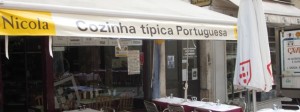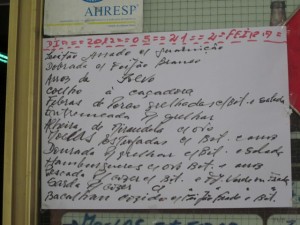As airline passengers know, one of the biggest annoyances when flying is having to fight for armrest space. But a simple solution, says Bob Payne, Director of Olfactory Experiences for the International Air Transport Association, is for passengers to bring aboard meals and snacks so odoriferous that passengers in the adjoining seats will be more than willing to give up as much elbow room as possible.
“While a small number of passengers [all now on the Terrorist Watchlist] have complained, we are finding that claiming the arm rests by olfactory means is far more benign than the barbed wire, electric-shock devices, and sharpened pencils through the back of the hand that some passengers have employed,” said Payne.
The most effective olfactory space-makers tend to be exotic food items such as Durian, an Asian fruit that is banned from many of that regions airlines, fermented fish, such as Swedish surstromming and Norwegian lutefisk, and fermented bean dishes, including Japanese natto and Korean doenjang, all of which have been described as possessing the aroma of Third World sewage systems on the occasions when they are working even less effectively than usual.
Yet while the exotics can be difficult to get hold of for U.S. and European flights (Spirit Airlines and Ryanair both offer them for an add-on fee), some excellent alternatives are easily available. Here are six of Payne’s favorites:
Over-ripe Cheese
Among the best are Limburger, which is particularly effective when paired with onions, Epoisses, which is banned from public transport throughout France, and Stinking Bishop, which in Britain is said to have a centuries-long tradition of raising the dead.
Tuna Fish
Any fish will do, but tuna is especially evocative of the sanitary facilities of a Grand Banks trawler.
Curry
A nice curry dish heavy on the cumin, coriander, and fenugreek works like a charm for extending your personal space to clear across the aisle and at least two rows in either direction.
Mexican Food
From beans to onions, the ingredients of a suitably malodorous burrito can drive even the most territorial fellow passenger flat up against the window.
Certain Vegetables
Cooked broccoli, cabbage, and asparagus, especially if packed in an insulated container that keeps them warm, exude a smell that says “”What’s it to ya?” To really insure some real estate, ask a flight attendant if he or she will reheat them for you. They won’t, but the possibility will have other passengers begging that the oxygen masks be dropped.
Carbonated Beverages
The stealth fighter of the armrest wars, carbonated beverages cause bloating and, combined with gas-producing foods like Mexican fare and the above-mentioned veggies, create a cone of flatulence that will keep other passengers at a respectful distance all the way into the arrival terminal.
Along with his responsibilities at the IATA, humor writer Bob Payne blogs forTupperware Brands, which he claims sponsored this post.
BigStock Photo







